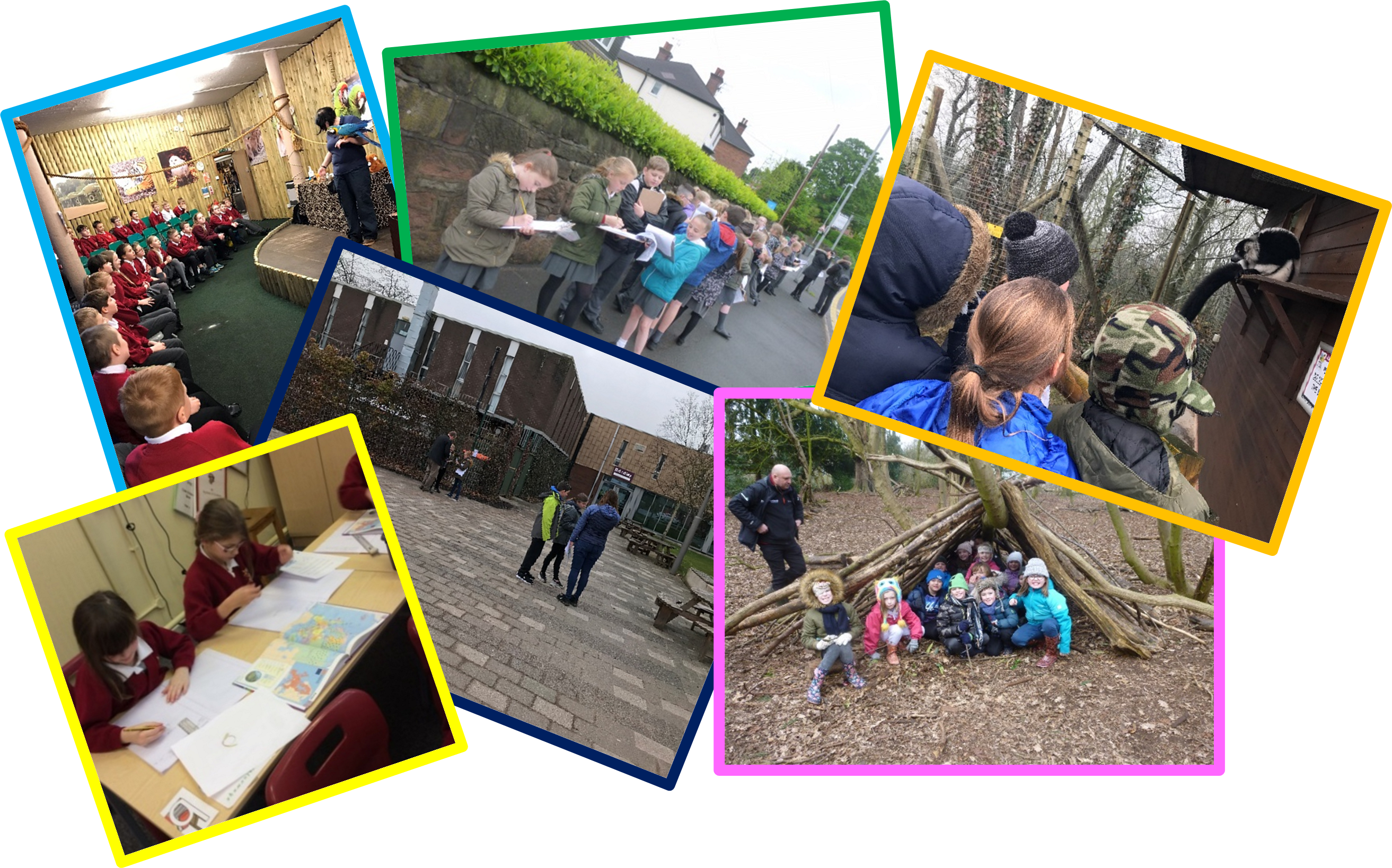Latest news in Geography
-
Geography in Reception
-
Year One visit to Peak Wildlife Park
-
Year Five Visit Peak Wildlife Park
-
Boris (and Nursery) goes Camping! 🏕
-
Around the world with Reception
-
Geography Comparisons in Year One
-
Map work in Reception
-
Year Four artists
-
Tracing Viking Territories in Year Five
-
Year Four Enrichment Day
Geography at Hillside
Subject Leader: Mr Mellor
Subject Support Coach: Mr Frost
Link Governor: Mrs Rushton
To see our long term plan and progression of skills document, please click below:
Vision – what they start with and what they leave with
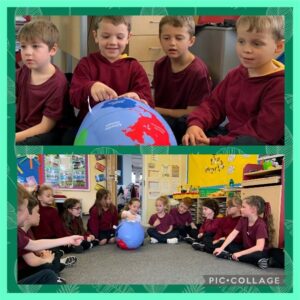 Geography is a subject that is packed with excitement and wonder. It helps children gain a better understanding of our world’s people, places and environments and the interactions between them. Geography helps children to understand how and why places are changing and to better imagine, predict and work towards what the future may hold. Underpinning all of this is strong spatial awareness that deepens our understanding of what places are like, why and how they are connected.
Geography is a subject that is packed with excitement and wonder. It helps children gain a better understanding of our world’s people, places and environments and the interactions between them. Geography helps children to understand how and why places are changing and to better imagine, predict and work towards what the future may hold. Underpinning all of this is strong spatial awareness that deepens our understanding of what places are like, why and how they are connected.
This vision of geography is what our geography curriculum at Hillside is built around. Through our carefully tailored curriculum, children will develop into explorers. We aim to excite children about the possibilities of what the world has in store for them to explore and experience. Children should leave Hillside with a sense of their place in the world, both culturally and physically, and a desire to enquire into the world around them.
The Subject Leader
My name is Mr Mellor and I lead Geography at Hillside Primary School. The vision I have set out above is one that all staff strive for. We want the best for all the children at our school and work collaboratively to achieve this. Learning is a journey for all in school. Children progress through the school, building on their geographical knowledge and skill set whilst teachers are willing to adapt their practice to meet the needs of all their learners and take on board feedback given by a subject leader.
As the Geography subject lead, I worked with my fellow colleagues to design a curriculum that we thought was relevant to our pupils and one that they would enjoy. I suggested a breadth of topics that would meet the needs of the National Curriculum and we have worked collaboratively to sort them into year groups where cross-curricular links could be made. I have ensured complete coverage of the National Curriculum and, where appropriate, that objectives are revisited in later year groups to ensure depth of learning. Finally, I have written a geography long term plan that was agreed upon by all teaching staff. This is regularly reviewed to ensure it is relevant to the children at our school.
To ensure an effective geography curriculum, I regularly monitor teaching and learning through lesson observations, book scrutinies and pupil voice. This enables me to gain a solid picture of strengths and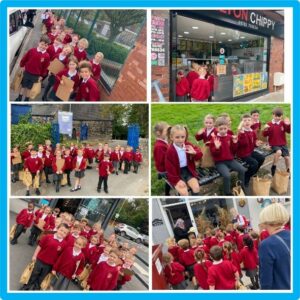 weaknesses in school and take action, where necessary. I also ensure teachers have the relevant resources to teach geography effectively. I am able to invest in high-quality resources for learners to use both inside and outside the classroom and online resources for teachers. This ensures teachers can plan exciting lessons for our children. Finally, as part of my role, I attend relevant CPD courses and disseminate any useful information to staff. This is usually in the form of staff meetings. The aim of these is to improve standards of teaching and learning. I feel it is important that teachers in school know that they can come and speak to me if they need guidance on anything to do with geography and I will always signpost them in the correct direction.
weaknesses in school and take action, where necessary. I also ensure teachers have the relevant resources to teach geography effectively. I am able to invest in high-quality resources for learners to use both inside and outside the classroom and online resources for teachers. This ensures teachers can plan exciting lessons for our children. Finally, as part of my role, I attend relevant CPD courses and disseminate any useful information to staff. This is usually in the form of staff meetings. The aim of these is to improve standards of teaching and learning. I feel it is important that teachers in school know that they can come and speak to me if they need guidance on anything to do with geography and I will always signpost them in the correct direction.
I love to see children passionate about where they come from and the world they can explore. That’s why I lead my subject with zeal and I feel lucky to be in a role that gives me the opportunity to see some of the great work that goes on in school from both teachers and learners. I hope you enjoy seeing some of the brilliant geography work on our school app!
The Geography Curriculum
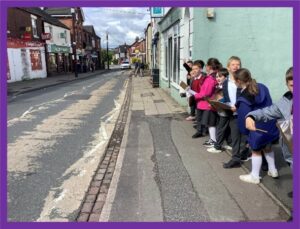 At Hillside, the National Curriculum objectives are split into overarching topics. Research was conducted to find the most appropriate year group for each topic to be taught and to best meet the needs of a cross-curricular approach. Topics were then carefully chosen by the subject leader, in collaboration with class teachers. Geography plays a varying role with some topics heavily focused on Geography, such as ‘Around the World’ in year 2 which focuses on the oceans and continents with a focus on Africa, and other topics where it has a more of a cross-curricular role, such as The Romans in year 4. The Geography curriculum is designed to offer breadth and depth in both knowledge and skills. We feel this best prepares children for their future learning. However, a key driver in developing the Geography curriculum was also enjoyment. As mentioned in the vision above, children should love their geography learning and teachers at Hillside do all they can to make geography interesting for children.
At Hillside, the National Curriculum objectives are split into overarching topics. Research was conducted to find the most appropriate year group for each topic to be taught and to best meet the needs of a cross-curricular approach. Topics were then carefully chosen by the subject leader, in collaboration with class teachers. Geography plays a varying role with some topics heavily focused on Geography, such as ‘Around the World’ in year 2 which focuses on the oceans and continents with a focus on Africa, and other topics where it has a more of a cross-curricular role, such as The Romans in year 4. The Geography curriculum is designed to offer breadth and depth in both knowledge and skills. We feel this best prepares children for their future learning. However, a key driver in developing the Geography curriculum was also enjoyment. As mentioned in the vision above, children should love their geography learning and teachers at Hillside do all they can to make geography interesting for children.
A detailed progression map has been produced to support teachers to effectively plan and assess Geography at Hillside. It sets out the learning in key, manageable chunks and details vocabulary that children should be exposed to. It breaks skills from the national curriculum down into each year group and shows how the 7 Key Concepts of Geography (Interdependence, Space, Scale, Human, Cultural Diversity, Physical and Environmental Impact) are covered.
We also aim to develop cultural capital through our curriculum offer. Some year groups have continent focuses. This gives the children the chance to explore a continent’s key human and physical features, some that are not taught elsewhere. We also have a social responsibility long term plan (see below). We feel it is important for children to be aware of some of the big issues facing our world today and through a mini topic each year, children get to explore these and form their own opinions. Parents and children also have the opportunity to explore 'Geography in the News' through Dojo posts. This enables children to learn about new countries from around the world through a fun and engaging news article.
The objectives for Geography in KS1 and KS2 are clearly set out for each year group in the National Curriculum. They are as follows:
Key Stage 1
Pupils should be taught to:
Locational knowledge
- name and locate the world’s 7 continents and 5 oceans
- name, locate and identify characteristics of the 4 countries and capital cities of the United Kingdom and its surrounding seas
Place knowledge
- understand geographical similarities and differences through studying the human and physical geography of a small area of the United Kingdom, and of a small area in a contrasting non-European country
Human and physical geography
- identify seasonal and daily weather patterns in the United Kingdom and the location of hot and cold areas of the world in relation to the Equator and the North and South Poles
- use basic geographical vocabulary to refer to:
- key physical features, including: beach, cliff, coast, forest, hill, mountain, sea, ocean, river, soil, valley, vegetation, season and weather
- key human features, including: city, town, village, factory, farm, house, office, port, harbour and shop
Geographical skills and fieldwork
- use world maps, atlases and globes to identify the United Kingdom and its countries, as well as the countries, continents and oceans studied at this key stage
- use simple compass directions (north, south, east and west) and locational and directional language [for example, near and far, left and right], to describe the location of features and routes on a map
- use aerial photographs and plan perspectives to recognise landmarks and basic human and physical features; devise a simple map; and use and construct basic symbols in a key
- use simple fieldwork and observational skills to study the geography of their school and its
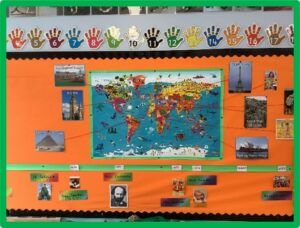 grounds and the key human and physical features of its surrounding environment
grounds and the key human and physical features of its surrounding environment
Key Stage 2
Pupils should be taught to:
Locational knowledge
- locate the world’s countries, using maps to focus on Europe (including the location of Russia) and North and South America, concentrating on their environmental regions, key physical and human characteristics, countries, and major cities
- name and locate counties and cities of the United Kingdom, geographical regions and their identifying human and physical characteristics, key topographical features (including hills, mountains, coasts and rivers), and land-use patterns; and understand how some of these aspects have changed over time
- identify the position and significance of latitude, longitude, Equator, Northern Hemisphere, Southern Hemisphere, the Tropics of Cancer and Capricorn, Arctic and Antarctic Circle, the Prime/Greenwich Meridian and time zones (including day and night)
Place knowledge
- understand geographical similarities and differences through the study of human and physical geography of a region of the United Kingdom, a region in a European country, and a region in North or South America
Human and physical geography
- describe and understand key aspects of:
- physical geography, including: climate zones, biomes and vegetation belts, rivers, mountains, volcanoes and earthquakes, and the water cycle
- human geography, including: types of settlement and land use, economic activity including trade links, and the distribution of natural resources including energy, food, minerals and water
Geographical skills and fieldwork
- use maps, atlases, globes and digital/computer mapping to locate countries and describe features studied
- use the 8 points of a compass, 4- and 6-figure grid references, symbols and key (including the use of Ordnance Survey maps) to build their knowledge of the United Kingdom and the wider world
- use fieldwork to observe, measure record and present the human and physical features in the local area using a range of methods, including sketch maps, plans and graphs, and digital technologies
Early Years Foundation Stage
We teach geography in nursery and reception as an integral part of the topic work covered during the year. The objectives that underpin this learning can be found in the Early Learning Goals (ELG’s). Geography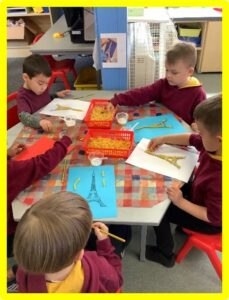 makes a significant contribution to the ELG ‘Understanding of The World’ through activities such as going on walks in the local area, exploring the woodlands and studying various exciting places in the world. The children are also given chance to discuss their own exciting geography discoveries, whether that be a holiday or somewhere they’ve seen in a book. Both Nursery and Reception are included on our progression document to ensure children are constantly building their blocks of knowledge and skills, ready to begin formal learning of the National Curriculum in Year One.
makes a significant contribution to the ELG ‘Understanding of The World’ through activities such as going on walks in the local area, exploring the woodlands and studying various exciting places in the world. The children are also given chance to discuss their own exciting geography discoveries, whether that be a holiday or somewhere they’ve seen in a book. Both Nursery and Reception are included on our progression document to ensure children are constantly building their blocks of knowledge and skills, ready to begin formal learning of the National Curriculum in Year One.
The contribution of Geography to teaching in other curriculum areas
English
Geography makes a significant contribution to the teaching of English in our school as it actively promotes the skills of reading, writing, speaking and listening. We link English skills and geography in a variety of ways. We ensure that children are given the opportunity to complete writing that is geographical in nature. For example, in the English long term plan, texts have been chosen as they link with the geography topic studied, such as the Rainbow Bear in year 2. A further example is persuasive writing that has previously been taught through the topic of deforestation in the rainforests. Tasks of this nature ensure that children not only develop their English skills, but also develop vital understanding of the world we live in. We also aim to link our shared reading texts to a class's current geography topic.
Mathematics
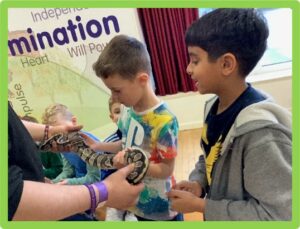 The teaching of geography in our school contributes to children’s mathematical understanding in a variety of ways. The children study space, scale and distance, and they learn how to use four- and six-figure grid references. They also use graphs to explore, analyse and illustrate a variety of data. Children have had the opportunity to create artefacts from other countries, such as South American masks, demonstrating their knowledge of both shape and symmetry. They have also had the opportunity to complete dates in Roman numerals of famous events around the world.
The teaching of geography in our school contributes to children’s mathematical understanding in a variety of ways. The children study space, scale and distance, and they learn how to use four- and six-figure grid references. They also use graphs to explore, analyse and illustrate a variety of data. Children have had the opportunity to create artefacts from other countries, such as South American masks, demonstrating their knowledge of both shape and symmetry. They have also had the opportunity to complete dates in Roman numerals of famous events around the world.
Computing
Computing enhances the teaching of geography, wherever appropriate, in each key stage. Children use technology to enhance their skills in data handling, web-based research and presenting their work. We offer children the opportunity to use iPads to record and photograph images.
Science
Science, in its very nature, has close links to geography. Both seek to discover and explore the world around us, moving us towards a better understanding of our world. The Working Scientifically strand links closely with enquiry-based learning and fieldwork. Through topics such as Plants and Rocks, appropriate geographical learning and enquiry occurs as part of the comprehensive science learning.
History
There are many close links between Geography and History. To understand how a place has changed, we must look at it’s past. Children get the opportunity to ask about a place’s past and often during history lessons, children have the opportunity to explore the geography of the area they are studying.
Art and D.T.
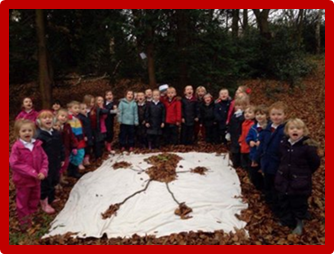
Through the artist of the term, children are offered a range of opportunities to further explore the landscapes they have studied. Children are able to bring places like Africa to life and build objects, like torches, that would be useful for explorers in a rainforest.
French
Through learning the French language, children gain vast experience that goes beyond just the words they learn. Children experience the culture and customs of France, through food, greetings and school life. They look at maps of France and use their language skills to navigate around them.
Enrichment
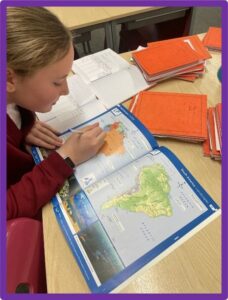 To ensure the vision for Geography is fully met, it is important that the children have the opportunity to expand their geographical horizons outside of lessons, thus ensuring they have a rich cultural capital that will see them through Hillside and beyond. This is achieved in a number of ways.
To ensure the vision for Geography is fully met, it is important that the children have the opportunity to expand their geographical horizons outside of lessons, thus ensuring they have a rich cultural capital that will see them through Hillside and beyond. This is achieved in a number of ways.
Firstly, vibrant displays are present in school, showcasing children’s excellent work. These can be found both in classrooms and in the corridor. One display in particular exhibits the key learning of continents, countries and capital cities. This is a display that children walk past each day and is a way of helping children remember their learning.
Throughout the school year, the subject leader takes part in whole school assemblies with a geographical focus. In the last few years, assemblies on Australia Day, World Food Day and Fairtrade Fortnight have been delivered.
For a number of years, children took part in a postcard challenge. Over the Summer holidays, children were challenged to write a postcard and send it in to school. When the children return in September, they share their postcards before being put on display for all children to see.
On Class Dojo, parents are encouraged to participate in geographical conversations at home through ‘Geography in the News’. Current news stories with a geography theme are posted to dojo and after discussing the stories at home, parents are encouraged to post children’s replies to a key question at the end of the news story.
Themed days are a positive way to encourage children to think about geography that isn’t necessarily covered in the curriculum. Over the last couple of years, we have celebrated Earth Day and World Environment Day at Hillside.
To ensure children grow up as rounded individuals, it is important that children are aware of current geographical issues in the world and what can be done about them. Tagged onto our Geography curriculum is the social responsibility mini unit. Themes such as poverty, sustainability and climate change are explored in a practical way and children are left to make up their own minds on what the human race needs to do in the future to protect the planet.
Educational Visits
We place great importance on educational visits to enhance the Geography curriculum. These visits allow children to gain first-hand experience of some of the concepts and places they have studied in the classroom. Fieldwork is integral to good geography teaching, and we include as many opportunities as we can to involve children in practical geographical research and enquiry. These are some examples of the trips undertaken in the past few years:
- Nursery visited Amerton Farm where they used their senses to explore a new environment
- Reception went on a local walk of our area using a map
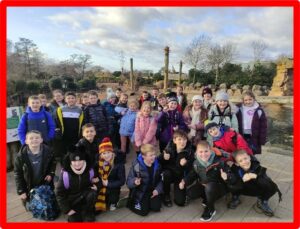
- Year 1 took part in fieldwork in our local area
- Year 2 visited Knowsley Safari Park to learn more about African animals.
- Year 3 went to Birmingham Botanical Gardens to see what the Mediterranean would be like.
- Year 4 visited Coombes Valley to enhance their learning about rivers.
- Year 5 go to the Peak District to complete fieldwork based on mountains.
- Year 6 took part in a week-long residential to Stanley Head, completing many activities with a focus on nature.
SMSC and British Values
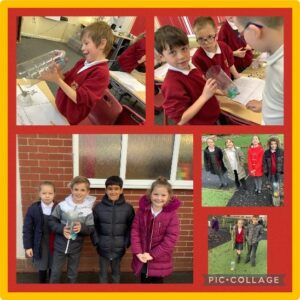 Geography helps to develop rounded young people and offers a multitude of opportunities to cover and embrace British Values, particularly human geography. ‘Mutual Respect’ and ‘Tolerance of those of Different Faiths and Beliefs’ are values that naturally woven into geography. Collaborative work during fieldwork develops respect for each other and the development of respect for the environment – and those within it. Children will discover similarities and differences between various groups of people throughout their Geography work at Hillside.
Geography helps to develop rounded young people and offers a multitude of opportunities to cover and embrace British Values, particularly human geography. ‘Mutual Respect’ and ‘Tolerance of those of Different Faiths and Beliefs’ are values that naturally woven into geography. Collaborative work during fieldwork develops respect for each other and the development of respect for the environment – and those within it. Children will discover similarities and differences between various groups of people throughout their Geography work at Hillside.
Geography aids the spiritual development of children through a sense of wonder with the physical and human world. An understanding that all life is linked together and humans and the natural world have to work in harmony to achieve peace.
Social and Moral development is supported through the questioning of what goes on in the world. In 2019, we celebrated World Environment Day and children had to tackle difficult issues that affect our world today. Children spoke about their social responsibility to make our lives greener - they concluded that we all have an equal part to play.
Geography supports cultural development by helping children to understand the range of diverse cultures in the world. Through geography children look at how different cultures and beliefs can impact on the environment and human issues. They gain an understanding of the world as a global community.
Assessment For Learning
It is important for us at Hillside to recognise children’s starting positions and ensure we know what we think the children know. Curriculum design plays a part as many parts of the geography curriculum are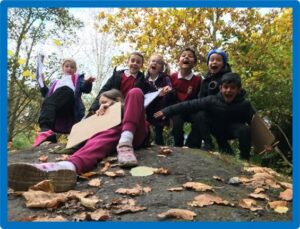 covered more than once or are revisited in the build up to a new block of learning. Also, our cross-curricular approach supports this. If children are immersed in their topics through all subjects, they are likely to remember more. Topic walls are a feature in every classroom with a world map showing links to other geographical learning. Also, Geography lessons often start with a flashback question. This offers children the chance to revisit a key piece of knowledge from their previous learning in any previous year group. These questions have been chosen by class teachers to reflect the key facts learnt in the topic. If children struggle with a question, it is revisited as part of another flashback question. Enrichment opportunities, such as the ones discussed above, also help to consolidate learning and widen children’s understanding of the world and its processes. Our cross-curricular approach supports this. Topic walls are a feature in every classroom with a world map showing links to other geographical learning. Geography lessons often start with a knowledge quiz to support this. This offers children the chance to revisit a key piece of knowledge from their previous learning. During the lesson, teachers will assess children’s work formatively by making judgements. On completion of a piece of work, the teacher assesses the work and uses this information to plan future learning. Written or verbal feedback is given to the child to help guide their progress. Older children are encouraged to make judgements about how they can improve their own work.
covered more than once or are revisited in the build up to a new block of learning. Also, our cross-curricular approach supports this. If children are immersed in their topics through all subjects, they are likely to remember more. Topic walls are a feature in every classroom with a world map showing links to other geographical learning. Also, Geography lessons often start with a flashback question. This offers children the chance to revisit a key piece of knowledge from their previous learning in any previous year group. These questions have been chosen by class teachers to reflect the key facts learnt in the topic. If children struggle with a question, it is revisited as part of another flashback question. Enrichment opportunities, such as the ones discussed above, also help to consolidate learning and widen children’s understanding of the world and its processes. Our cross-curricular approach supports this. Topic walls are a feature in every classroom with a world map showing links to other geographical learning. Geography lessons often start with a knowledge quiz to support this. This offers children the chance to revisit a key piece of knowledge from their previous learning. During the lesson, teachers will assess children’s work formatively by making judgements. On completion of a piece of work, the teacher assesses the work and uses this information to plan future learning. Written or verbal feedback is given to the child to help guide their progress. Older children are encouraged to make judgements about how they can improve their own work.
At the end of a term’s themed work, teachers complete an Excel spreadsheet linked to the topics covered over the year. Using the progression map, teachers assess as to whether children are emerging, expected or exceeding. Teachers have access to previous assessment data as a tool to moderate their current judgements and track progress over time. This information is then passed on to the subject lead to support the monitoring process.
Growth Mindset and Careers
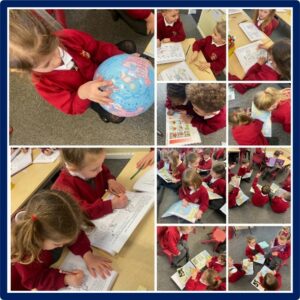 At Hillside, children are taught to use their growth mindset in everything they do. Geography is no different. Children may come across a problem to solve when completing fieldwork or a map set out in a way they have not come across before. When children come across these problems or tasks that they are finding tricky, they are encouraged to continue their attempt using their growth mindset. This could be using the power of ‘yet’, using positive words or stopping to consider one of the many stories where having a growth mindset has benefited somebody.
At Hillside, children are taught to use their growth mindset in everything they do. Geography is no different. Children may come across a problem to solve when completing fieldwork or a map set out in a way they have not come across before. When children come across these problems or tasks that they are finding tricky, they are encouraged to continue their attempt using their growth mindset. This could be using the power of ‘yet’, using positive words or stopping to consider one of the many stories where having a growth mindset has benefited somebody.
There are a plethora of careers linked to Geography. At Hillside, we try to encourage careers education as part of our curriculum. All staff are aware of the importance of careers education, meaning it can often be taught informally in lessons as and when the opportunity arises. However, in the past, geographical careers have been discussed in assemblies and as part of whole school careers events.
Quotes
As part of the monitoring process, pupil voice takes place and offers a great insight into how children view Geography at Hillside. These are a selection of what has been said:
Year One Child
“I like learning new things in Geography. I like learning about why stuff happens in the world.”
Year Two Child:
“I like learning about how people are different. Some people are poor, some people are rich and some are in the middle. We’ve looked at countries like these on Google Earth.”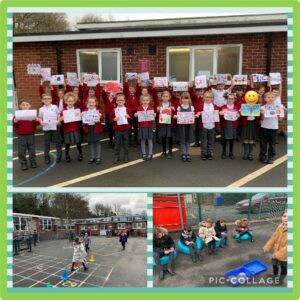
Year Three Child:
“It’s really interesting to imagine and see what daily life is like for people in other countries. We all have different cultures and different ecosystems where we live.”
Year Four Child:
“I love using iPads to research new countries that we learn in our topics. We also do flashback warm ups so we can remember the old places we learnt.”
Year Five Child:
“Geography is a really interesting subject!”
Year Six Child
“Geography trips are the best ones. It’s great to then come back to school and use equipment such as compasses to locate where we have been on a map.”
